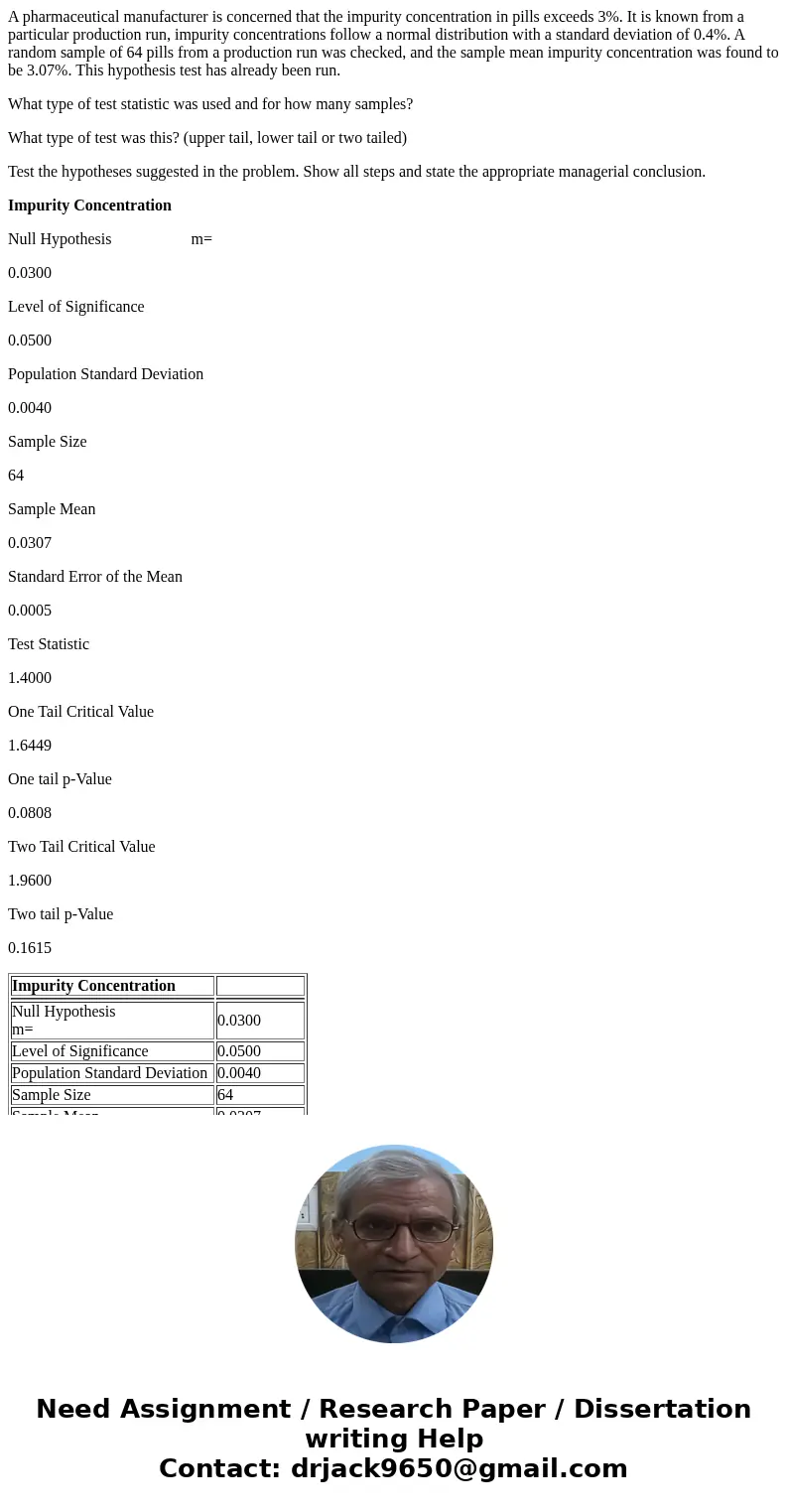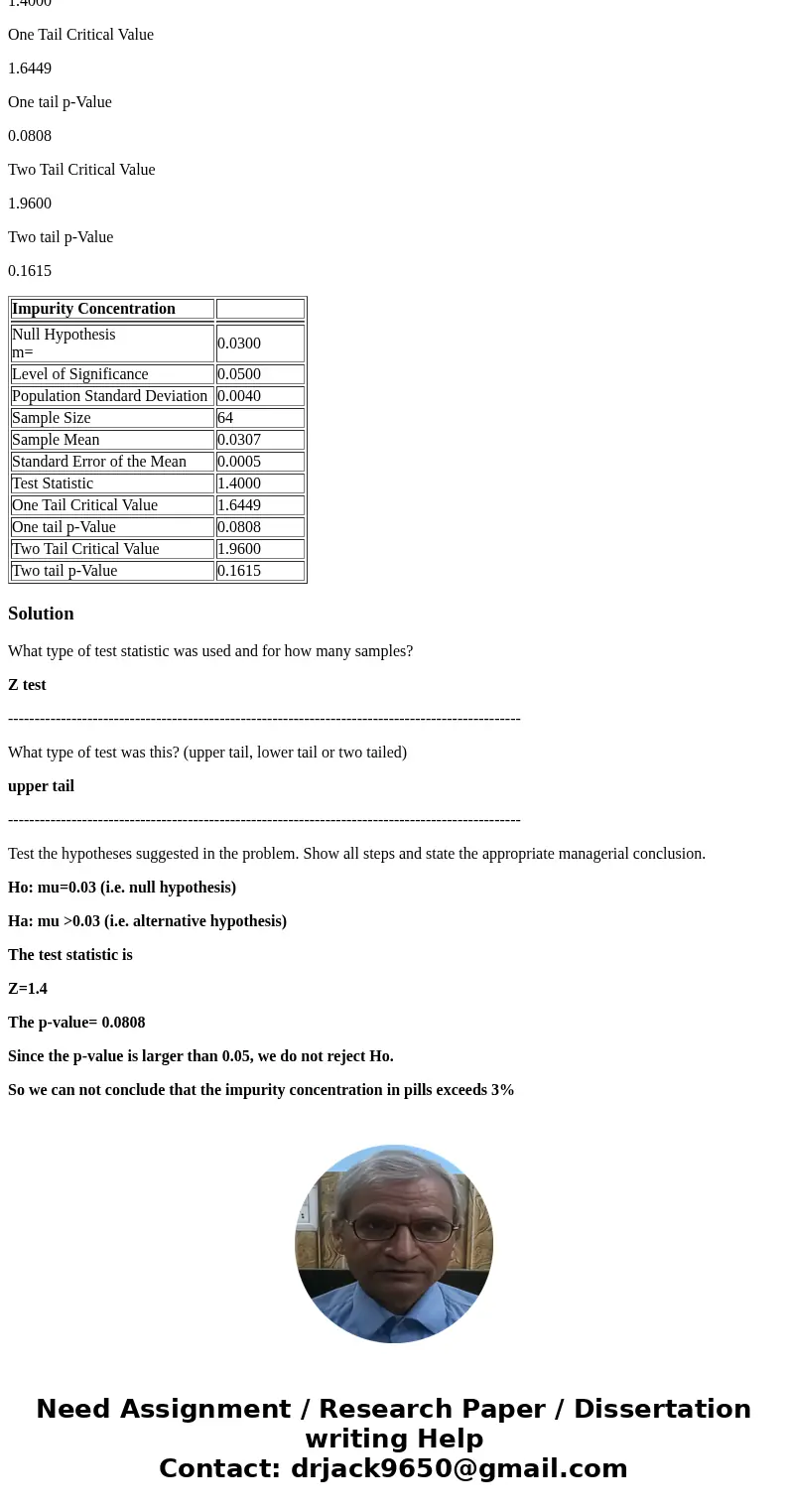A pharmaceutical manufacturer is concerned that the impurity
A pharmaceutical manufacturer is concerned that the impurity concentration in pills exceeds 3%. It is known from a particular production run, impurity concentrations follow a normal distribution with a standard deviation of 0.4%. A random sample of 64 pills from a production run was checked, and the sample mean impurity concentration was found to be 3.07%. This hypothesis test has already been run.
What type of test statistic was used and for how many samples?
What type of test was this? (upper tail, lower tail or two tailed)
Test the hypotheses suggested in the problem. Show all steps and state the appropriate managerial conclusion.
Impurity Concentration
Null Hypothesis m=
0.0300
Level of Significance
0.0500
Population Standard Deviation
0.0040
Sample Size
64
Sample Mean
0.0307
Standard Error of the Mean
0.0005
Test Statistic
1.4000
One Tail Critical Value
1.6449
One tail p-Value
0.0808
Two Tail Critical Value
1.9600
Two tail p-Value
0.1615
| Impurity Concentration | |
| Null Hypothesis m= | 0.0300 |
| Level of Significance | 0.0500 |
| Population Standard Deviation | 0.0040 |
| Sample Size | 64 |
| Sample Mean | 0.0307 |
| Standard Error of the Mean | 0.0005 |
| Test Statistic | 1.4000 |
| One Tail Critical Value | 1.6449 |
| One tail p-Value | 0.0808 |
| Two Tail Critical Value | 1.9600 |
| Two tail p-Value | 0.1615 |
Solution
What type of test statistic was used and for how many samples?
Z test
-------------------------------------------------------------------------------------------------
What type of test was this? (upper tail, lower tail or two tailed)
upper tail
-------------------------------------------------------------------------------------------------
Test the hypotheses suggested in the problem. Show all steps and state the appropriate managerial conclusion.
Ho: mu=0.03 (i.e. null hypothesis)
Ha: mu >0.03 (i.e. alternative hypothesis)
The test statistic is
Z=1.4
The p-value= 0.0808
Since the p-value is larger than 0.05, we do not reject Ho.
So we can not conclude that the impurity concentration in pills exceeds 3%


 Homework Sourse
Homework Sourse